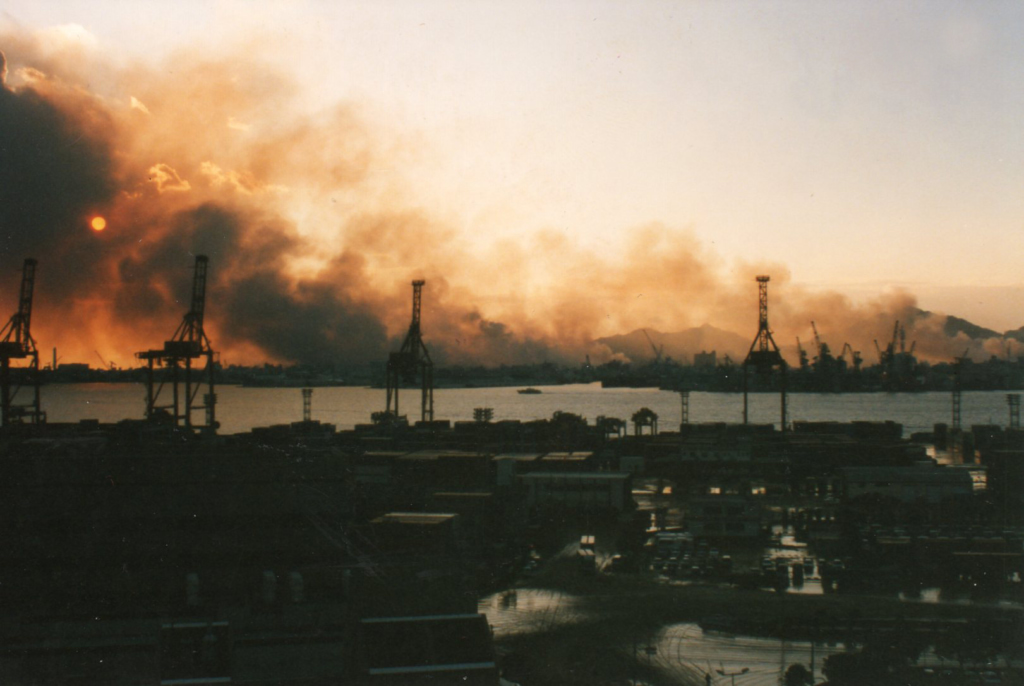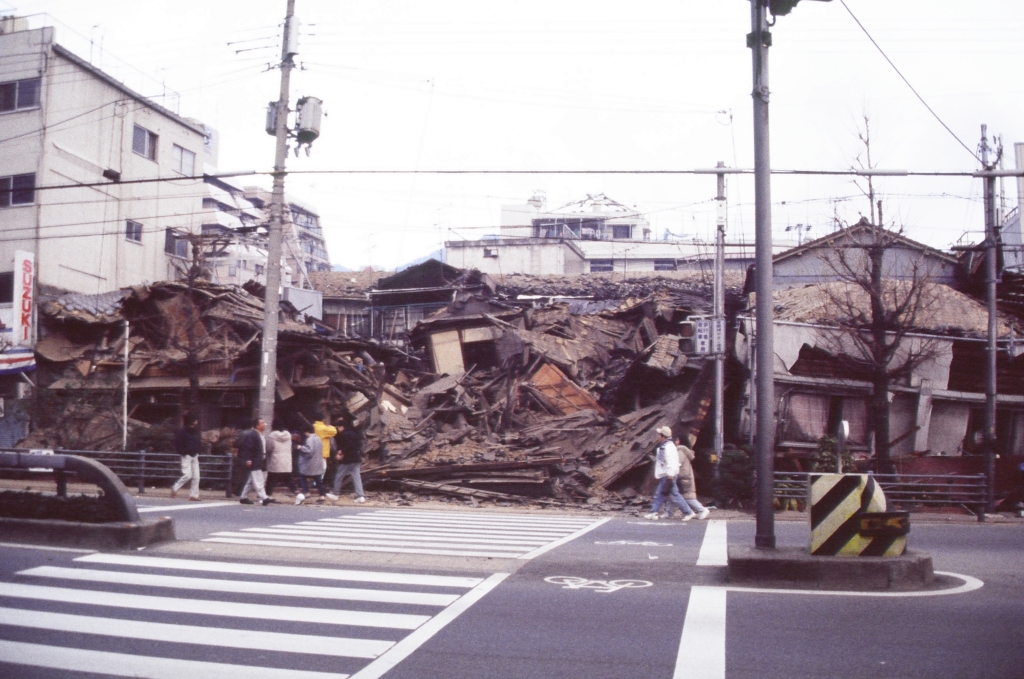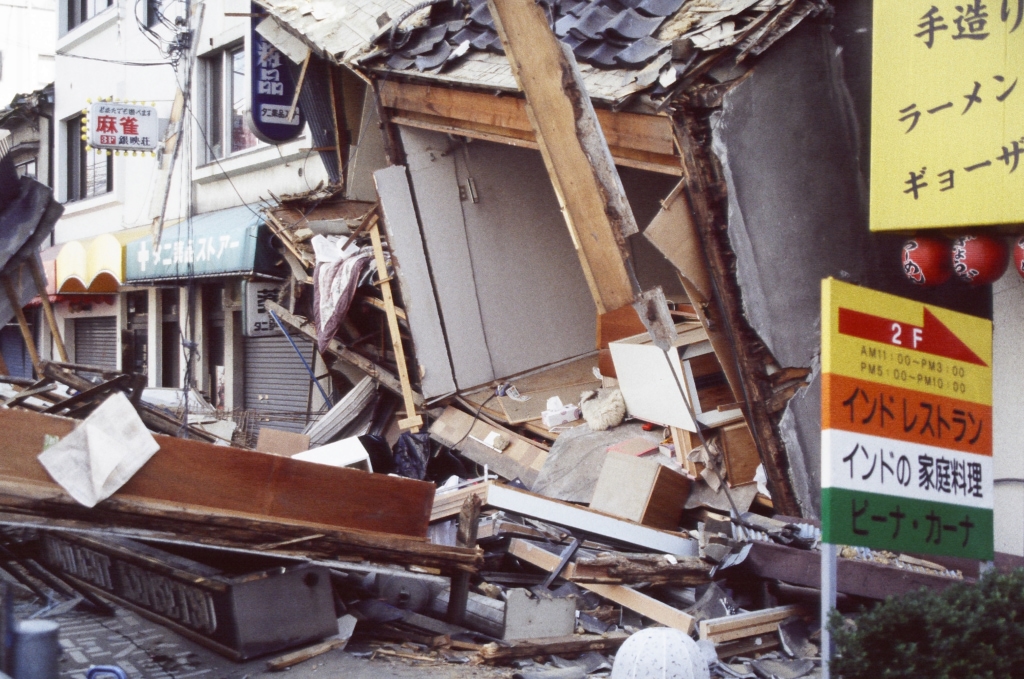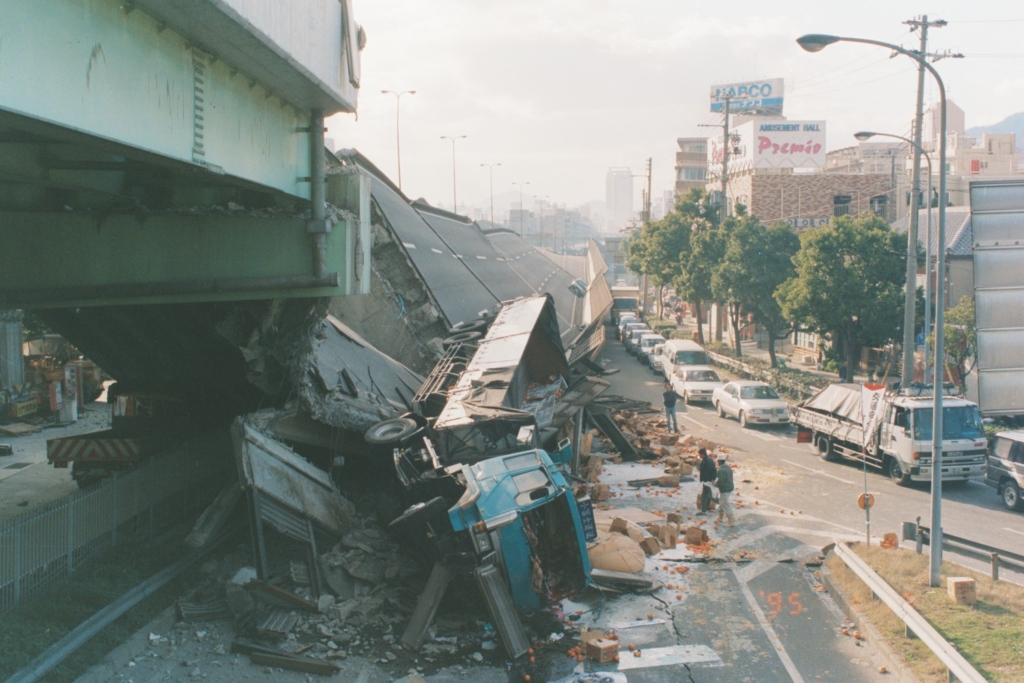On this day in 1995, the biggest earthquake to hit Japan in 47 years struck below Awaji Island — around 20 kilometers away from the center of Kobe City. The Great Hanshin earthquake (also known as the Hanshin Awaji daishinsai and the Kobe earthquake) measured 6.9 on the moment magnitude scale and had a maximum intensity of 7 on the JMA Seismic Intensity Scale.
While the country had experienced larger quakes before, the close proximity of the epicenter to a densely populated urban area, added to the fact that its focus was 16 kilometers below the earth’s surface, resulted in a huge number of fatalities. Close to 6,500 people died, with around 70 percent of the casualties coming from Kobe.

Kobe on Fire
Paralyzed with Fear
The tremors began while most people were still sleeping at 5:46am and lasted for around 20 seconds. Yoshio Fukumoto was driving a sightseeing bus at the time. He had departed from Nozawa hot spring ski resort at 6pm the previous evening. Taking turns at the wheel with a fellow driver during the overnight trip, he was roughly 15 kilometers from the center of Kobe on the Hanshin expressway with three passengers left on board when a flash of light appeared before his eyes.
“The freeway started to weave,” said Fukumoto during the National Geographic documentary series Seconds from Disaster. “I had seen something like this in the movies, but I never thought I would see the real thing. It was like driving on waves. I couldn’t see properly and couldn’t focus because of the bouncing. I pulled on the handbrake and at that moment, the road in front of me just fell away. At that point, I really thought we’d fallen off the edge. I was paralyzed with fear.”
Luckily, Fukumoto survived, largely unscathed. Thousands of others weren’t so fortunate. A total of 38 children under the age of 18 were orphaned while 332 lost one parent. Around 40,000 people were left injured while somewhere between 250,000 and 310,000 were displaced. Amongst those who couldn’t return home was actor Ayame Misaki who played Saori in the first season of Alice in Borderland. She was just five when the earth started trembling below her 28 years ago.

Nearly 400,000 buildings were destroyed following the earthquake
Desperate Living Conditions
“I’ve forgotten quite a few incidents in my life, but I vividly remember that day and my time at the evacuation center,” said Misaki to The Japan Times. “I can still hear the screams. All around, I saw dead bodies and people trapped under the rubble. Those images have never left me.
“At the shelter, food was scarce and you would often have to go days without having a bath,” added Misaki. “At first everyone was on good terms, promising to cooperate with each other. As time went on and the numbers decreased, you could feel the tension rising and I often saw adults arguing. I believe we see the true character of humans when they are faced with such a dire situation.”
Several communities were destroyed as a result of the disaster. As of early October 1995, roughly 2,700 people were living in tents or privately rented prefabricated portable units on public property — either in parks or playgrounds — in the center of Kobe. Though temporary housing was an option, many didn’t want to move far from their homes as they were concerned about losing their financial stability and social support networks. The situation proved particularly difficult for the elderly.
The poorest citizens were placed in waiting and evacuation centers, where around 3,000 remained nine months after the quake. Unsuccessful in securing temporary housing through the lottery system or not wanting to move away from the city, they had to live in community centers and gymnasiums with almost no privacy. The situation wasn’t much better for those in temporary houses. Close to 50,000 small metal shelters were erected in and around Kobe by the summer of 1995, some of which were only 25 square meters.
Pushing for Reform
While the local economy recovered relatively quickly, some people had to stay in temporary shelters much longer than expected. The last one closed in 2000, five years after the disaster occurred. Health experts criticized the housing arrangements, fearing that survivors could develop mental health problems due to their living conditions.
Realizing the support system was lacking in the event of a major catastrophe, the central government passed the Natural Disaster Victims Relief Law in 1998, providing up to ¥1 million (later increased to ¥3 million) in public assistance to those whose houses had been destroyed by a natural disaster. That same year, the Act on Promotion of Specified Non-Profit Activities, commonly known as the NPO Law, came into effect. As with the Natural Disaster Victims Relief Law, it was the Great Hanshin earthquake that accelerated this push for reform.
With the central government, which reportedly turned down 40 of the 60 offers of assistance it received from foreign states, struggling to deal with the sheer scale of the tragedy, civic organizations helped out in record numbers. It was seen as a pivotal event in the history of volunteerism and the so-called shimin shakai (civil society) boom in Japan.

Many people were left with nothing
The Emergence of Volunteerism
Members of the yakuza were among the first on the scene, handing out food, water and diapers to people. Other groups and individuals soon followed suit. It’s reported that there were around 1.2 million volunteers engaged in relief efforts in the first three months following the quake. What they lacked was a proper structure and that was why the NPO Law was introduced. It strengthened the credibility of many volunteer organizations. After the legislation was ratified, they were recognized as companies rather than charity groups.
These were just some of the consequences of the Great Hanshin earthquake, a devastating natural disaster that had a huge impact on Japanese society. It was felt that the possibility of a major earthquake in the Kansai district was unlikely. This meant the region wasn’t properly prepared for such a monumental tragedy. The quake was, therefore, a major wake-up call for Japanese disaster prevention authorities. Based on lessons learned from the quake, the Building Standard Act was revised in 2000. This led to improvements in the safety of wooden buildings. Underneath bridges, meanwhile, rubber bricks were installed to absorb the shock when the earth starts to shake.
More Effective Disaster Preparedness
There were several other significant improvements made after 1995, most significantly in terms of disaster response policies. The Ground Self-Defense Forces (SDF), for instance, were given automatic authority to respond to earthquakes over a certain magnitude following the Hanshin earthquake. In Kobe, an order to send them in wasn’t issued until nine hours after the quake. Extreme traffic jams meant they were then further delayed by another five hours.
Responses to subsequent disasters, including the 6.6 magnitude earthquake that hit Niigata Prefecture in 2004 and, of course, the 2011 Tohoku earthquake and tsunami were much faster and more effective. Having learned from its mistakes in 1995, Japan is now much better prepared for large-scale tragedies. And it needs to be as they occur here often and a huge quake is expected relatively soon. Experts believe there is between a 70 and 80 percent chance of a magnitude 8 or 9 megathrust earthquake occurring in the Nankai Trough within the next 30 years.









